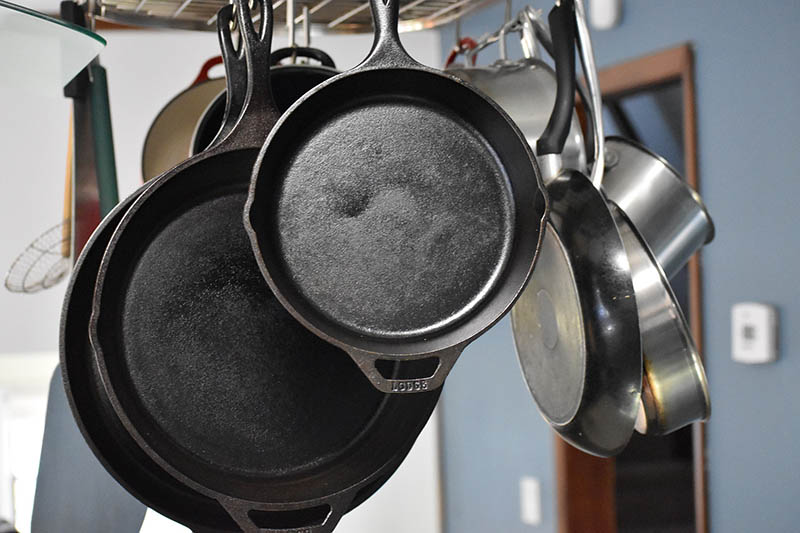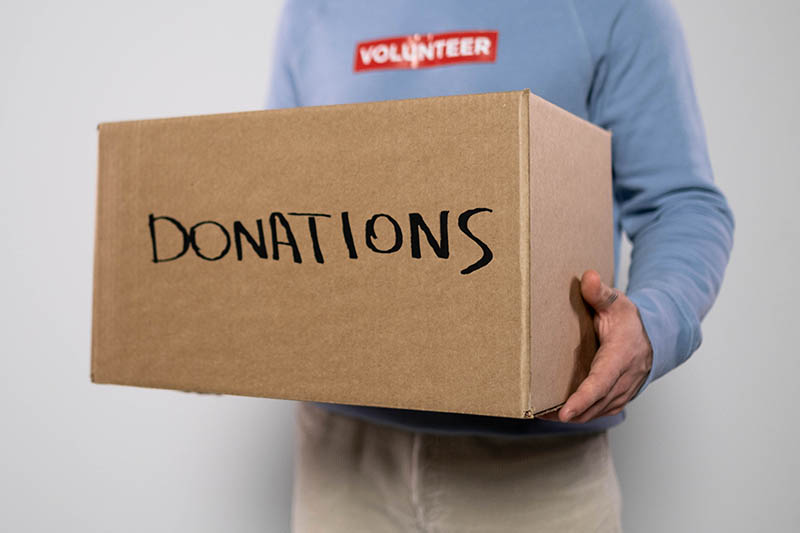Can You Recycle Pots and Pans? How Do You Properly Dispose of Them?
-
Jeff Weishaupt
- Last updated:

Although pots and pans are recyclable, most recycling centers don’t accept them. That’s because these items contain a combination of materials, like metal and plastic, making recycling difficult.
The best way to dispose of old pots and pans is to donate them. Charities, thrift stores, and other organizations are often willing to take used cookware. In addition, these organizations may use or resell the items to help raise funds.
If donating isn’t an option, try repairing the pans. If you’re handy with tools, you can fix a damaged handle or replace it. Here’s a closer look into recycling and disposing of pots and pans.

Are Pots and Pans Recyclable?
Yes, pots and pans can be recycled. The process involves separating the metal from the plastic and other materials. The metal component is then melted down and repurposed into new items.
Since this is a complicated process, recycling centers don’t typically accept pots and pans. Instead, donating these items or repairing them, if possible, is more efficient.

How Do I Dispose of Pots and Pans?
Depending on their condition, there are several ways to dispose of pots and pans. Here are some options.
Drop Them Off at a Scrap Metal Station
Scrap metal collection centers accept pots and pans, which can be separated from other metals like aluminum or steel. Some centers charge a fee for the service, so it’s a good idea to call ahead and find out the details before dropping off your items.
If your pots and pans are in a condition where donating them isn’t an option, it’s best to give them to a scrap metal station. The station will reuse the metal to create new products, reducing the need for new materials.
Donate Them to a Local Charity
If your pots and pans are still in good condition, consider donating them. Several charities accept cookware donations. For example, Goodwill and The Salvation Army take pots and pans, as do other thrift stores.
You can also ask local soup kitchens and homeless shelters if they accept donations. If they do, your pots and pans may be able to help out a family in need.

Send Them to a Recycling Company
TerraCycle is a company specializing in recycling hard-to-recycle items, including pots and pans. It repurposes the metal into new products, such as watering cans and benches.
Unlike other recycling services, TerraCycle charges a fee for their services. Starting from $109, the prices increase with larger quantities. You can contact the company and tell them you need to recycle kitchen items.
They will send a Kitchen Separation Zero Waste Box to your doorstep, where you can safely dispose of your pots and pans. Once the box is full, you can ship it back to them for recycling.
Rabbit Recycling is another great company that can recycle your pots and pans, especially the Teflon-coated ones. You can request a collection of your unwanted pots, pans, and cookware from the comfort of your own home.
All you need to do is fill out the online order form and follow the instructions. The recycling company will provide you with a box and send it to your home for the collection.
Once collected, the team at Rabbit Recycling will recycle the pots, pans, and cookware into new products that can be used worldwide. You have to pay $7 for a small bucket and $16 for a large container.
Use Them for Camping
Charcoal can be messy and hard to clean up, so many people use old pots and pans when camping. The metal won’t absorb the odors and flavors of your food. Plus, it’s a great way to reuse items that are still in good condition.

How to Recycle Non-Stick Pans?
Carbon steel pans can undergo reseasoning to restore their properties, but cookware made from other materials like aluminum and stainless steel cannot be recycled similarly. Generally speaking, non-stick pans lose their non-stick properties with time and should be discarded.
However, to keep these pans from ending up in landfills, there are a few ways to recycle them. But before you can do that, it’s essential to know what the pan is made of.
Most pans are made of stainless steel, copper, aluminum, or other nonferrous metals. Scrap metal recycling centers typically accept ferrous (containing iron) pans. Plus, they’ll pay you for the metal contained in them.
However, it’s best to use mail-back options when it comes to non-stick and nonferrous pans. Most non-stick pans have a polytetrafluoroethylene (PTFE) coating, which is not accepted at scrap metal recycling centers.
The coating has to be removed before the pan can be recycled. Some companies specialize in removing PTFE coatings from non-stick pans and will accept them through their mail-back programs.
In addition, most of these companies collect the pans and send them to an approved recycler. Alternatively, you can donate non-stick pans still in decent condition to charity or thrift shops.
When Should You Throw Away Pots and Pans?
Donating your pots and pans to a charity or Goodwill helps your community. However, you shouldn’t donate any rusty or damaged pans. The only disposal option for these pans is a recycling or scrap metal center. Here are the signs that a pot or pan needs to be thrown away.
Warped Bottom
With time, the bottom of the pan can start to warp. That makes it difficult for the pan to stay flat on a stove and cook evenly. Warping also leads to uneven cooking since the heat sources don’t remain in contact with the pan.
Scratched Non-Stick Cookware
Non-stick pans are only functional as long as their non-stick coating is intact. If the pan is heavily scratched or has a peeling coating, it’s best to throw it away and buy a new one.
Excessive Rust
Rust is an indication of wear and tear. If the pan has more than a few flakes of rust, it’s time to replace it. In addition, rust can be hazardous to your health, as eating food cooked in such pans could lead to the ingestion of rust. Plus, rust will also cause a decrease in the pan’s non-stick quality.

Cracked/Loose Handles or Lids
If there’s a crack in the handle or lid, it’s best to throw away the pan and look for a replacement. Loose handles can be a burn hazard as they can cause the pan to slip in your hands while transferring it from the stove to the countertop.
Peeling and Cracking
If the coating on the pan’s surfaces is peeling or cracking, it could become a health hazard. The chemicals from the coating can enter your food, making it toxic.
Moreover, the metal base of the pan is likely to be compromised, and that reduces the efficiency of heat transfer.
Tips for Donating Pots and Pans
If you’ve decided to donate your used pots and pans, there are a few tips you should keep in mind for the best experience.
Clean Them Thoroughly
First, it’s essential to clean your pots and pans before donating them. Make sure to use a mild detergent and warm water, scrubbing any stuck-on debris.
If the pans have a non-stick coating, use a soft sponge and soap to avoid damaging the surface. Dry each item thoroughly before wrapping or packing it up for donation.
Baking soda works well to remove tough stains and odors. Use it for hard-to-clean spots or pans with a distinct smell.

Pack Carefully
Most donation centers accept donations in boxes or other containers. Wrap each pot and pan individually in bubble wrap or foam packing peanuts. The bubble wrap will protect them during the journey and help keep everything organized when they arrive at their destination.
Meet the Requirements
Places taking donations will clearly tell you what they accept and don’t. Make sure that your pots and pans meet the requirements of the donation center before sending them off. Otherwise, the pots and pans will eventually end up in the landfill, destroying the good work you were trying to do.

Conclusion
Metal pots and pans can be recycled. However, recycling centers don’t always accept them due to the fact that the materials in them are often mixed together. Additionally, metal cookware can be difficult and expensive to clean for recycling purposes.
If recycling is not an option, you can dispose of the pans at a metal recycling center. Or, you can donate them to a charity or thrift store if they are still in good condition. Before you donate, make sure the pans are in a usable condition. Also, clean them thoroughly before dropping them off at a charity or your local Goodwill.
Featured Image Credit: sferrario1968, Pixabay
Contents
